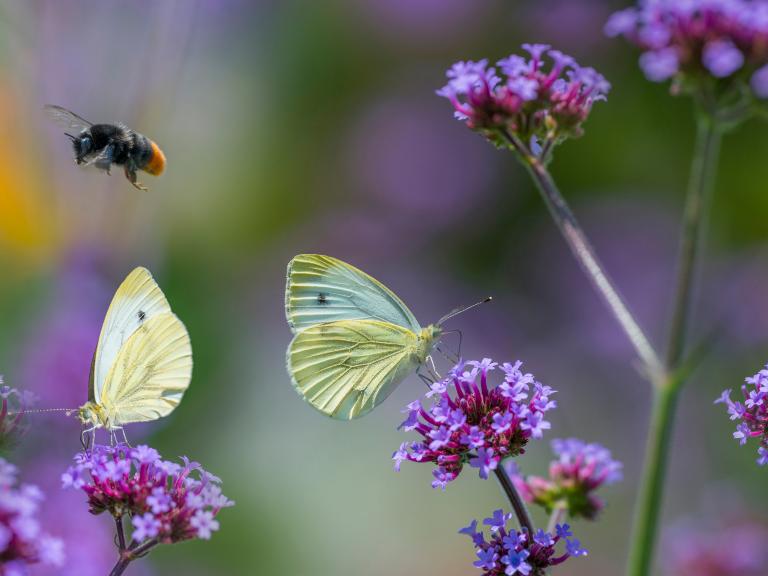-
Last updated on

© Shutterstock
Biodiversity – the totality of living organisms on the planet – is indispensable for ensuring the quality and survival of human life on Earth. Unfortunately, it is suffering greatly from marked human expansion. In the end, mankind will also fall victim to this. Indeed, the ill-considered destruction of nature can give rise to new diseases, as the COVID-19 pandemic has demonstrated.
Biodiversity undeniably contributes to our well-being. It plays an essential role in the formation of oxygen, clean water, healthy soil and so on. And it offers us numerous raw materials, such as construction materials and medicines. In other words, biodiversity provides countless so-called ecosystem services.
If you tried to express the economic value of biodiversity, you would come to astronomical sums. For example, more than half of the world's GNP – some 40 trillion euros – depends on nature. Pollination by insects and other animals also represents a great deal of money: over 75% of the world's food crops depend on it.
The biodiversity crisis and the climate crisis are mutually reinforcing. But that can also be turned around in a positive sense: by focusing on more nature in all its forms, you can make an immediate and forceful impact on the climate disruption.
The points below show how the European Commission (EC) intends to review our unbalanced relationship with nature.

At least one third of the protected areas must be strictly protected. On the photo: primeval forest in Slovenia. © Shutterstock
1. Protecting nature
At least 30% of the land and 30% of the sea must be protected in the EU. At least one third of these protected areas must be strictly protected, i.e. no human activities may take place. The EC is thinking of all remaining primeval forests, in addition to peat bogs, mangrove forests, wetlands and seagrass fields, among other things.
2. Restoring nature
Bringing nature back to farmland
Agriculture must offer more space to nature. This can be done through sustainable practices such as precision farming, organic farming, agro-ecology and agro-forestry. The total use of chemical pesticides should be reduced by 50% by 2030. At least 10% of the agricultural area must be transformed into landscapes of high diversity. These could include hedges, wooded borders, ponds and buffer strips.
This certainly does not have to lead to lower productivity. Indeed, pollinators(link is external) ensure a higher yield while hedges and trees prevent losing valuable fertile soil particles due to wind or running water (= erosion). Agro-forestry – combining agriculture with trees – also increases production. Organic farming provides 10 to 20% more jobs per hectare than traditional farms. The EU therefore wants at least 25% of agricultural land to be farmed organically by 2030 at the latest.
The biodiversity strategy here clearly overlaps with the recent EU strategy for healthy and environmentally friendly food: from farm to fork.

Agriculture must offer more space to nature. On the photo: flowered field border. © Shutterstock
Restoring and protecting the soil
The soil is an extremely important non-renewable resource. Yet it suffers enormously from deforestation, overgrazing and unsustainable agricultural and forestry practices, in addition to buildings and road construction. Therefore, the EC wants to protect soil fertility, limit soil erosion and increase the quantity of organic matter in the soil.
Building more forests and improving forest resilience
Forests play an extremely important role in countless things, including carbon sequestration to combat climate disruption. This is why the EC wants to plant at least 3 billion extra trees in the EU by 2030. Greening the cities will be a point for consideration (see below). Agriculture will also focus more on trees (see above).
Win-win from renewable energy
Sustainable, renewable energy is crucial to becoming climate-neutral. At the same time, it can combat the loss of biodiversity. Therefore, the EC will give priority to ocean energy, offshore wind energy that also enables the recovery of fish stocks, and solar parks with biodiversity-friendly land cover. In addition, the EC wants to switch to biofuels based on residues and non-reusable and non-recyclable waste.
Restoring marine ecosystems
The sea and coastal areas also have a lot to offer, both socio-economically and in terms of health. This is why the EC wants to restore and thoroughly protect marine ecosystems. Marine resources must be exploited sustainably. In doing so, the EC applies zero tolerance for illegal practices. For example, bottom trawling gear must not damage biodiversity and by-catches of endangered species must be eliminated.

The freely meandering river Néris in Vilnius (Lithuania), one of the greenest cities in the EU. @ Shutterstock
Restoring freshwater ecosystems
The EC wants to give at least 25,000km of rivers their free rein back by 2030.This will restore flood plains and wetlands to their former glory. By 2027, all surface water and groundwater should reach a good status.
Greening urban and suburban areas
Urban greening can be achieved not only with city forests and parks, but also with city farms, green roofs and green walls, trees in streets, city meadows and hedges with great biodiversity. This will have a positive impact on the physical and mental well-being of the city's inhabitants, as was shown during the recent lockdown. Pesticides must be eliminated.
Reducing pollution
Biodiversity suffers greatly from the release of nutrients, chemical pesticides, pharmaceuticals, hazardous chemicals, urban and industrial wastewater and other waste substances such as litter and plastics. This is why the EC wants to develop an action plan to reduce air, water and soil pollution to zero. The use of fertilisers will need to be reduced by 20%. The environmental risk of pesticides will be assessed more strictly.
Pushing back invasive exotic species
Some exotic plants and animals spread so fast that they displace local species. They can also give rise to new infectious diseases. The EC wants to curb these "invasive exotic species" and thus ensure that 50% fewer Red List species are threatened by them.

In the cities all green is welcome. On the photo: Alkmaar (Netherlands). @ Shutterstock
Everyone takes part
In order to achieve the objectives, the EC intends to mobilise €20 billion per year from both private and public funds at a national and EU level. A significant part of the EU climate budget will be invested into biodiversity and nature-based solutions. The EC will also make use of the principle that both the user and the polluter will pay.
Everyone must take part: governments, businesses, science and private citizens. Research will be funded and there will also be a new knowledge centre for biodiversity. The EC will also focus on education in environmental sustainability.
International pioneer
On a global scale, the EU will establish itself as an energetic advocate for biodiversity. The forthcoming 15th Conference of the Parties to the Convention on Biological Diversity should provide an ambitious new framework for the period beyond 2020.
Points for consideration at an international level include the oceans and trade. For example, the EU is in favour of 3 vast marine protected areas in the Southern Ocean, including Eastern Antarctica. It also wants to keep a close eye on deep-sea mining. Marine minerals on the seabed cannot be exploited without a thorough prior study of the impact on biodiversity.
The EU also wants to take a more vigorous approach to international trade in wildlife, plants and ivory. After all, this is at the root of new zoonotic diseases such as COVID-19.
Biodiversity will also be given more attention in development co-operation. With NaturAfrica, the EC intends to better protect nature in Africa, while at the same time offering the local population opportunities in green sectors. The EC also established a global coalition for biodiversity in national parks and plant and animals zoos, among other places.
In short, with its "EU Biodiversity Strategy for 2030", the EC has developed a bold policy to give a genuine new boost to biodiversity. The EC therefore calls on the European Parliament and the Council to adopt the strategy before the 15th UN Biodiversity Conference. This was postponed until spring 2021 due to the coronavirus crisis.
More on Planet

Tropical forests gradually store less carbon
Tropical forests are gradually losing their capacity to store carbon. If no timely action is taken, they could even start emitti...

Virunga: jobs protecting forests
The majestic Virunga park (DR Congo) is one of our planet’s treasures, but its rich nature is threatened by logging, fishing, po...

Why biodiversity is important
Find out why biodiversity is vital to humanity and the planet.
